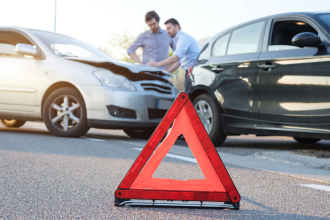Introduction
Hurricanes, with their immense power and unpredictability, can wreak havoc on properties, lives, and communities. While the immediate focus after such natural disasters is on safety and recovery, many are quickly confronted with a maze of legal issues, insurance claims, and questions about responsibility. From the fallen tree on your porch to the floodwaters in your living room, knowing your rights and understanding the legalities can significantly influence your recovery journey. While it may seem overwhelming to contemplate legal assistance amidst the chaos, a hurricane lawyer can be an indispensable ally. This article delves into the reasons why legal guidance is paramount following a storm and answers some of the most pressing questions homeowners face in the aftermath of a hurricane.
The Aftermath of a Storm: Common Scenarios
The sheer force of a hurricane can cause catastrophic damages, both seen and unseen. In the immediate aftermath, homeowners often find themselves assessing a scene of chaos, which can include:
- Felled Trees and Debris: Powerful winds can uproot trees, causing them to fall on houses, vehicles, and other structures. This not only results in structural damages but also poses the question of liability – who takes the responsibility if a tree from a neighboring property falls onto yours?
- Flooding: Storm surges and heavy rainfall can lead to severe flooding. Water can seep into homes, damaging furnishings, electrical systems, and foundational structures. The aftermath can be further complicated by the potential growth of mold.
- Roof and Structural Damage: The high-speed winds of a hurricane can tear off roofs, break windows, and compromise the structural integrity of buildings.
- Power Outages and Utility Failures: Hurricanes often result in prolonged power outages, making it challenging to communicate, cook, or maintain other daily routines.
Understanding the common scenarios of storm aftermath is the first step in navigating the complexities that arise. In such times, having knowledgeable counsel, like a hurricane lawyer, can be crucial.
Determine Responsibility: Who Bears the Burden?
In the aftermath of a hurricane, one of the foremost concerns for many is discerning who is responsible for the damages incurred. Responsibility, or liability, is often contingent on specific circumstances:
- Tree Damages: If a tree from your property falls onto a neighbor’s home due to natural conditions, traditionally, your neighbor’s insurance policy should cover the damages. However, if the tree was visibly dead or diseased and you neglected its removal, you might be held liable.
- Injuries During a Storm: Injuries sustained during a storm, particularly on someone else’s property, can lead to questions of negligence. For example, if a homeowner failed to secure potential hazards in anticipation of the storm, they could be deemed responsible for any resultant injuries.
- Common Areas in Housing Communities: For those living in community housing, damages to shared spaces like lobbies or pools are generally covered by the homeowners’ association’s insurance.
- Insurance Ambiguities: In many instances, understanding the nuances of one’s insurance policy and discerning what is covered can be a challenge.
Navigating these scenarios can be intricate. Consultation with a hurricane lawyer ensures clarity and helps victims understand their rights and obligations.
Navigating Property Damage Claims
The aftermath of a hurricane often finds homeowners grappling with property damage claims. It’s a process that can be daunting, but understanding the steps and nuances can empower victims:
- Initial Assessment: Before filing a claim, thoroughly document all damages. Take clear photographs from various angles, jot down detailed notes, and if possible, obtain quotes for repairs. This will serve as evidence when negotiating with insurance companies.
- Contact Your Insurance Provider: As soon as possible after the event, get in touch with your insurance company to report the damages. They will provide guidance on the subsequent steps in the claims process.
- Understand Your Policy: Familiarize yourself with the specifics of your insurance policy. What are the coverages, deductibles, and exclusions? Many homeowners are unaware that traditional policies may not cover flooding, requiring a separate flood insurance policy.
- Adjuster’s Visit: An insurance adjuster will visit to assess the damage. This is a crucial step. Be present during the visit, share your documentation, and ensure that the adjuster’s evaluation is thorough.
- Claim Denials or Underpayments: Sometimes, insurance companies might deny a claim or offer an underpayment. In these scenarios, consulting with a hurricane lawyer can be invaluable. They can assist in renegotiating with the insurance, or if necessary, taking legal action.
- Stay Proactive: Regularly follow up on your claim’s status. It helps to stay organized, keeping all related documents in a dedicated folder or digital space.
Understanding and proactively managing the claims process can expedite your recovery and ensure you receive the compensation you deserve.
The Legal Perspective: To Sue or Not to Sue?
Taking legal action after hurricane-induced damage is a decision not to be made lightly. The aftermath of a storm can be emotionally and financially draining, but there are circumstances where seeking legal redress can be both necessary and beneficial:
- Insufficient Insurance Payout: Often, insurance companies may offer settlements that don’t adequately cover the damages sustained. If negotiations don’t lead to a fair settlement, legal action might be the next viable step.
- Disputed Liability: If there’s disagreement about who is responsible for the damage, a lawsuit can help determine liability and ensure the responsible party covers the costs.
- Landlord-Tenant Disputes: Renters might find themselves in a situation where landlords are unwilling to make necessary repairs or reimburse costs after storm damage. Legal action can compel landlords to uphold their responsibilities.
- Product or Construction Flaws: If damages result from poor construction or defective products (like a faulty sump pump), victims might have a case against manufacturers or contractors.
Engaging with a hurricane lawyer can provide a clear understanding of the potential benefits and risks of litigation, guiding victims towards the best course of action.
Statute of Limitations and Hurricane Claims
In legal terms, the statute of limitations refers to the window of time in which a person can bring forth a lawsuit. For hurricane damage claims, this timeframe varies by state. Understanding this is crucial for homeowners:
- Time Constraints: Depending on the state, victims typically have a set number of years from the date of the damage to file a lawsuit against an insurance company. Missing this window can forfeit your right to legal action.
- Why It Matters: Delays in repairs, latent damages, or prolonged disputes with insurance companies can eat into this timeframe. Being cognizant ensures you don’t miss the deadline.
- Extensions and Exceptions: There are situations, albeit rare, where the statute can be tolled or extended. For example, if a hurricane victim is a minor or mentally incapacitated.
Engaging with a hurricane lawyer early on can ensure that victims are well within the time constraints and are equipped to defend their rights effectively.
Understanding FEMA’s Role
The Federal Emergency Management Agency (FEMA) plays a pivotal role in the aftermath of hurricanes and other natural disasters in the U.S. But what exactly is their role when it comes to hurricane-related damages?
- Disaster Declarations: When a natural disaster strikes, the President can issue a disaster declaration upon request from state officials. This allows FEMA to step in and offer aid.
- Individual Assistance: FEMA provides financial help to homeowners, renters, and businesses affected by a disaster. This aid can cover repairs, temporary housing, and other disaster-related expenses not covered by insurance.
- Public Assistance: This program funds the repair, replacement, or restoration of damaged public infrastructure, such as roads, bridges, and schools.
- Navigating Claims: While FEMA provides financial aid, it doesn’t replace personal property insurance. It’s crucial to understand the differences between FEMA assistance and insurance claims. Also, there’s a deadline for registering for FEMA assistance post-disaster.
- FEMA’s Limitations: The aid provided by FEMA is often intended to kickstart recovery, not necessarily to cover all losses. For comprehensive recovery, it’s paramount to have insurance in place and, when disputes arise, consult a hurricane lawyer.
By understanding FEMA’s role and limitations, victims can navigate the post-hurricane landscape more effectively and seek out the necessary aid and resources.
Conclusion
Hurricanes are undeniably powerful forces of nature, leaving trails of destruction in their wake. As homeowners grapple with damages, understanding the legal landscape becomes paramount. Whether it’s determining responsibility for a fallen tree, navigating intricate insurance claims, or discerning the role of entities like FEMA, being informed can make all the difference. Even as you wade through the complex web of post-storm formalities, remember that you’re not alone. Professionals, especially experienced ones, stand ready to guide you, ensuring that your rights are protected and that you receive the compensation you rightfully deserve. In times of chaos and uncertainty, such guidance can be the beacon that leads towards restoration and recovery.















